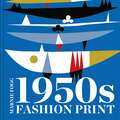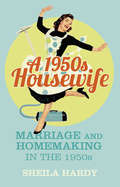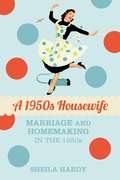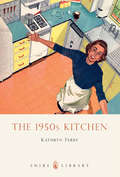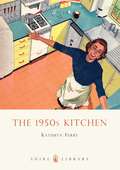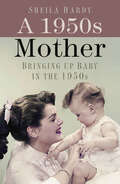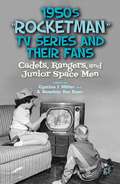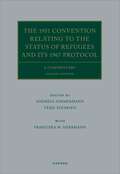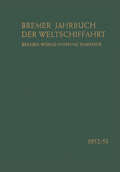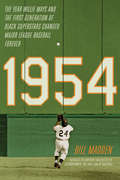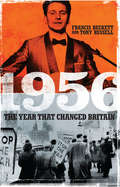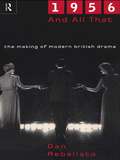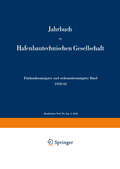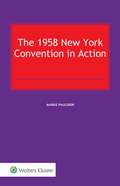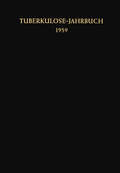- Table View
- List View
A 1950s Holiday in Bognor Regis
by Sylvia Endacott Shirley LewisBognor Regis is situated on the south coast of Britain overlooking the English Channel. After more than two centuries as a seaside resort, the town is still attracting visitors, in no small part due to the clarity of its air. On the 18th of January 1787, the resort's founder, Sir Richard Hotham, laid a foundation stone marking the town as a "public bathing place ", a description that Bognor Regis has continued to earn and enjoy ever since. Throughout the decades seaside holidays have changed to reflect current fashions. Bognor Regis has been no different; rather like the ebb and flow of the tide, visitor numbers have risen, fallen and risen again according to the various fashions of the day. Accessibility by train from London was a major contributor to the number of visitors in the resort's early years. Coaches and Sunday school outings then came into prominence, followed eventually by the arrival of the car. As leisure time and money became more plentiful for all, a Sunday outing was replaced by a week at the seaside, then a fortnight's break. Today many people choose Bognor Regis for a weekend away or a four day mid-week break, spending their main holiday time abroad as is the current fashion. Whatever the reason, the attraction of the sea is still strong and will continue to draw people from the towns and cities to the beaches for a paddle in the sea. Bognor Regis continues to attract visitors to its friendly beaches and by its regular appearance at the top of the National Sunshine League.
A 1950s Housewife: Marriage and Homemaking in the 1950s
by Sheila HardyBeing a housewife in the 1950s was quite a different experience to today. After the independence of the wartime years, women had to leave their jobs when they married and support their husband by creating a spotless home, delicious meals and an inviting bedroom. A 1950s Housewife collects heart-warming personal anecdotes from women who embarked on married life during this fascinating post-war period, providing a trip down memory lane for any wife or child of the 1950s. This book will prove an eye-opener for those who now wish they had listened when their mothers attempted to tell them stories of the ‘old days’, and will provide useful first-hand accounts for those with a love of all things kitsch and vintage. From ingenious cleaning tips, ration-book recipes and home decor inspiration, the homemaking methods of the fifties give an entertaining and poignant insight into the lives of 1950s women.
A 1950s Housewife: Marriage and Homemaking in the 1950s
by Sheila HardyBeing a housewife in the 1950s was quite a different experience to today. After the independence of the wartime years, women had to leave their jobs when they married and support their husband by creating a spotless home, delicious meals and an inviting bedroom. A 1950s Housewife collects heart-warming personal anecdotes from women who embarked on married life during this fascinating post-war period, providing a trip down memory lane for any wife or child of the 1950s. This book will prove an eye-opener for those who now wish they had listened when their mothers attempted to tell them stories of the ‘old days’, and will provide useful first-hand accounts for those with a love of all things kitsch and vintage. From ingenious cleaning tips, ration-book recipes and home decor inspiration, the homemaking methods of the fifties give an entertaining and poignant insight into the lives of 1950s women.
A 1950s Irish Childhood: From Catapults to Communion Medals
by Ruth Illingworth1950s Ireland was the age of De Valera and John Charles McQuaid. It was the age before television, Vatican II, and home central heating. A time when motor cars and public telephones had wind-up handles, when boys wore short trousers and girls wore ribbons, when nuns wore white bonnets and priests wore black hats in church. To the young people of today, the 1950s seem like another age. But for those who played, learned and worked at this time, this era feels like just yesterday. This delightful collection of memories will appeal to all who grew up in 1950s Ireland and will jog memories about all aspects of life as it was.
The 1950s Kitchen (Shire Library #627)
by Kathryn FerryThe 1950s was the first great age of the modern kitchen. Labour-saving appliances, bright colours and the novelty of fitted units moved the kitchen from dankness into light, where it became the domain of the happy housewife and the heart of the home. New space-age material Formica, decorated with fashionable patterns, topped sleek cupboards that contained new classic wares such as Pyrex and 'Homemaker' crockery, and the ingredients for 1950s staples: semolina, coronation chicken and spotted dick. Electricity entered the kitchens of millions, and nowhere in the home was modern technology and modern design more evident. Bold colour, clean lines and stainless steel were keynotes of the decade. This book – a celebration of cooking, eating and living in the 1950s kitchen – is a feast of nostalgia, and a mine of inspiration for anyone wanting to recreate that '50s look in their own home.
The 1950s Kitchen (Shire Library)
by Kathryn FerryThe 1950s was the first great age of the modern kitchen. Labour-saving appliances, bright colours and the novelty of fitted units moved the kitchen from dankness into light, where it became the domain of the happy housewife and the heart of the home. New space-age material Formica, decorated with fashionable patterns, topped sleek cupboards that contained new classic wares such as Pyrex and 'Homemaker' crockery, and the ingredients for 1950s staples: semolina, coronation chicken and spotted dick. Electricity entered the kitchens of millions, and nowhere in the home was modern technology and modern design more evident. Bold colour, clean lines and stainless steel were keynotes of the decade. This book – a celebration of cooking, eating and living in the 1950s kitchen – is a feast of nostalgia, and a mine of inspiration for anyone wanting to recreate that '50s look in their own home.
A 1950s Mother: Bringing up Baby in the 1950s
by Sheila HardyEmbarking on motherhood was a very different affair in the 1950s to what it is today. From how to dress baby (matinee coats and bonnets) to how to administer feeds (strictly four-hourly if following the Truby King method), the child-rearing methods of the 1950s are a fascinating insight into the lives of women in that decade. In The 1950s Mother author, mother and grandmother Sheila Hardy collects heart-warming personal anecdotes from those women, many of whom are now in their eighties, who became mothers during this fascinating post-war period. From the benefits of ‘crying it out’ and being put out in the garden to gripe water and Listen with Mother, the wisdom of mothers from the 1950s reverberates down the decades to young mothers of any generation and is a hilarious and, at times, poignant trip down memory lane for any mother or child of the 1950s.
A 1950s Portsmouth Childhood
by Valerie ReillyFor children in Portsmouth, the 1950s was an exciting time. With the war over and a renewed enthusiasm in the air, life was good. There was a range of entertainment – as well as day trips and holidays to the beach, families could relax in front of the television, enjoy their favourite stars on the big screen and dance along to the radio. For Valerie Reilly, the ’50s was a time of celebration of national, local and personal events, which she recalls in absorbing detail here. If you remember the docks, trips to Southsea and exploring bombed-out buildings, then you’ll enjoy this charming look back at an exciting era.
1950s “Rocketman” TV Series and Their Fans: Cadets, Rangers, and Junior Space Men
by Cynthia J. MillerThe fourteen essays featured here focus on series such as Space Patrol, Tom Corbett, and Captain Z-Ro, exploring their roles in the day-to-day lives of their fans through topics such as mentoring, promotion of the real-world space program, merchandising, gender issues, and ranger clubs - all the while promoting the fledgling medium of television.
A 1950s Southampton Childhood
by Penny Legg James MarshThe 1950s was a time of regeneration and change for Southampton. For children growing up during this decade, life was changing fast. They still made their own toys and earned their own pocket money, but, on new television sets, Andy Pandy (1950) and Bill and Ben (1952) delighted them. With rationing discontinued, confectionary was on the menu again and, for children, Southampton life in the 1950s was sweet. If you saw a Laurel and Hardy performance at The Gaumont Theatre, or made dens out of bombed-out buildings, then you’ll thoroughly enjoy this charming and nostalgic account of the era.
The 1951 Convention Relating to the Status of Refugees and its 1967 Protocol 2e (Oxford Commentaries on International Law)
by Andreas Zimmermann Terje Einarsen Franziska HerrmannThe Convention Relating to the Status of Refugees adopted on 28 July 1951 in Geneva continues to provide the most comprehensive codification of the rights of refugees yet attempted. Consolidating previous international instruments relating to refugees, the 1951 Convention with its 1967 Protocol marks a cornerstone in the development of international refugee law. At present, there are 149 States Parties to one or both of these instruments, expressing a worldwide consensus on the definition of the term refugee and the fundamental rights to be granted to refugees. These facts demonstrate and underline the extraordinary significance of these instruments as the indispensable legal basis of international refugee law. This Commentary provides for a systematic and comprehensive analysis of the 1951 Convention and the 1967 Protocol on an article-by-article basis, exposing the interrelationship between the different articles and discussing the latest developments in international refugee law. In addition, several thematic contributions analyse questions of international refugee law which are of general significance, such as regional developments, the interrelationship between refugee law and general human rights law, as well as the relationship between refugee law and the law of the sea.
The 1951 Convention Relating to the Status of Refugees and its 1967 Protocol 2e (Oxford Commentaries on International Law)
by Andreas Zimmermann Terje Einarsen Franziska M. HerrmannThe Convention Relating to the Status of Refugees adopted on 28 July 1951 in Geneva continues to provide the most comprehensive codification of the rights of refugees yet attempted. Consolidating previous international instruments relating to refugees, the 1951 Convention with its 1967 Protocol marks a cornerstone in the development of international refugee law. At present, there are 149 States Parties to one or both of these instruments, expressing a worldwide consensus on the definition of the term refugee and the fundamental rights to be granted to refugees. These facts demonstrate and underline the extraordinary significance of these instruments as the indispensable legal basis of international refugee law. This Commentary provides for a systematic and comprehensive analysis of the 1951 Convention and the 1967 Protocol on an article-by-article basis, exposing the interrelationship between the different articles and discussing the latest developments in international refugee law. In addition, several thematic contributions analyse questions of international refugee law which are of general significance, such as regional developments, the interrelationship between refugee law and general human rights law, as well as the relationship between refugee law and the law of the sea.
The 1951 Convention Relating to the Status of Refugees and its 1967 Protocol 2e (Oxford Commentaries on International Law)
by Andreas Zimmermann Terje Einarsen Franziska M. HerrmannThe Convention Relating to the Status of Refugees adopted on 28 July 1951 in Geneva continues to provide the most comprehensive codification of the rights of refugees yet attempted. Consolidating previous international instruments relating to refugees, the 1951 Convention with its 1967 Protocol marks a cornerstone in the development of international refugee law. At present, there are 149 States Parties to one or both of these instruments, expressing a worldwide consensus on the definition of the term refugee and the fundamental rights to be granted to refugees. These facts demonstrate and underline the extraordinary significance of these instruments as the indispensable legal basis of international refugee law. This Commentary provides for a systematic and comprehensive analysis of the 1951 Convention and the 1967 Protocol on an article-by-article basis, exposing the interrelationship between the different articles and discussing the latest developments in international refugee law. In addition, several thematic contributions analyse questions of international refugee law which are of general significance, such as regional developments, the interrelationship between refugee law and general human rights law, as well as the relationship between refugee law and the law of the sea.
1952/53: Analyse der Schiffahrtswirtschaft (Bremer Jahrbuch Weltschiffahrt Bremen World Shipping Yearbook)
by Gustav A. TheelThe 1953 Essex Flood Disaster: The People's Story
by Patricia Rennoldson SmithOn a stormy evening in January 1953, Peggy Morgan kissed her five-year-old son goodnight, blissfully unaware of the impending catastrophe. Before sunrise the next morning the North Sea had destroyed her home and Peggy was a childless widow. There had been no prediction, no warning. Men, women and children lost their lives in Essex on that fateful night and the lives of survivors were changed forever. The lucky ones awoke when ice-cold seawater burst through their doors and windows. Those not so lucky slept on towards death. This book captures, in the words of the survivors, the essence of life in the low-lying coastal areas before the disaster. Those who lived tell how, with dogged determination, they prevailed against unimaginable adversity: their stories of courage and fortitude are told simply and without self pity. And for the first time those who died have their story told. Illustrated with many previously unpublished photographs, the awe-inspiring and heartrending stories of survivors and victims of the 1953 Essex floods are told here for the first time.
1954: The Year Willie Mays and the First Generation of Black Superstars Changed Major League Baseball Forever
by Bill Madden1954: Perhaps no single baseball season has so profoundly changed the game forever. In that year-the same in which the US Supreme Court unanimously ruled, in the case of Brown vs. Board of Education, that segregation of the races be outlawed in America's public schools-Larry Doby's Indians won an American League record 111 games, dethroned the five-straight World Series champion Yankees, and went on to play Willie Mays's Giants in the first World Series that featured players of color on both teams. Seven years after Jackie Robinson had broken the baseball color line, 1954 was a triumphant watershed season for black players-and, in a larger sense, for baseball and the country as a whole. While Doby was the dominant player in the American League, Mays emerged as the preeminent player in the National League, with a flair and boyish innocence that all fans, black and white, quickly came to embrace. Mays was almost instantly beloved in 1954, much of that due to how seemingly easy it was for him to live up to the effusive buildup from his Giants manager, Leo Durocher, a man more widely known for his ferocious "nice guys finish last" attitude. Award-winning, New York Times bestselling author Bill Madden delivers the first major book to fully examine the 1954 baseball season, drawn largely from exclusive recent interviews with the major players themselves, including Mays and Doby as well as New York baseball legends from that era: Yogi Berra and Whitey Ford of the Yankees, Monte Irvin of the Giants, and Carl Erskine of the Dodgers. 1954 transports readers across the baseball landscape of the time-from the spring training camps in Florida and Arizona to baseball cities including New York, Baltimore, Chicago, and Cleveland-as future superstars such as Hank Aaron, Ernie Banks, and others entered the leagues and continued to integrate the sport. Weaving together the narrative of one of baseball's greatest seasons with the racially charged events of that year, 1954 demonstrates how our national pastime-with the notable exception of the Yankees, who represented "white supremacy" in the game-was actually ahead of the curve in terms of the acceptance of black Americans, while the nation at large continued to struggle with tolerance.
1954: The Year Willie Mays and the First Generation of Black Superstars Changed Major League Baseball Forever
by Bill Madden1954: Perhaps no single baseball season has so profoundly changed the game forever. In that year-the same in which the US Supreme Court unanimously ruled, in the case of Brown vs. Board of Education, that segregation of the races be outlawed in America's public schools-Larry Doby's Indians won an American League record 111 games, dethroned the five-straight World Series champion Yankees, and went on to play Willie Mays's Giants in the first World Series that featured players of color on both teams. Seven years after Jackie Robinson had broken the baseball color line, 1954 was a triumphant watershed season for black players-and, in a larger sense, for baseball and the country as a whole. While Doby was the dominant player in the American League, Mays emerged as the preeminent player in the National League, with a flair and boyish innocence that all fans, black and white, quickly came to embrace. Mays was almost instantly beloved in 1954, much of that due to how seemingly easy it was for him to live up to the effusive buildup from his Giants manager, Leo Durocher, a man more widely known for his ferocious "nice guys finish last" attitude. Award-winning, New York Times bestselling author Bill Madden delivers the first major book to fully examine the 1954 baseball season, drawn largely from exclusive recent interviews with the major players themselves, including Mays and Doby as well as New York baseball legends from that era: Yogi Berra and Whitey Ford of the Yankees, Monte Irvin of the Giants, and Carl Erskine of the Dodgers. 1954 transports readers across the baseball landscape of the time-from the spring training camps in Florida and Arizona to baseball cities including New York, Baltimore, Chicago, and Cleveland-as future superstars such as Hank Aaron, Ernie Banks, and others entered the leagues and continued to integrate the sport. Weaving together the narrative of one of baseball's greatest seasons with the racially charged events of that year, 1954 demonstrates how our national pastime-with the notable exception of the Yankees, who represented "white supremacy" in the game-was actually ahead of the curve in terms of the acceptance of black Americans, while the nation at large continued to struggle with tolerance.
1956: The Year That Changed Britain
by Francis Beckett1956: a defining year that heralded the modern era.Britain and France occupied Suez, and the Soviet Union tanks rolled into Hungary. Nikita Khrushchev's 'secret speech' exposed the crimes of Stalin, and the Royal Court Theatre unveiled John Osborne's Look Back in Anger. Rock 'n' roll music was replacing the gentle pop songs of Mum and Dad's generation, and it was the first full year of independent television.As post-war assumptions were shattered, the upper middle class was shaken and the communist left was shocked, radical new ideas about sex, skiffle and socialism emerged, and attitudes shifted on an unprecedented scale - precipitated by the decline of Attlee's Britain and the first intimations of Thatcher's.From politics and conflict to sport and entertainment, this extraordinary book transports us back in time on a whirlwind journey through the history, headlines and happenings of this most momentous of years, vividly capturing the revolutionary spirit of 1956 - the year that changed Britain.
1956 and All That: The Making of Modern British Drama
by Dan RebellatoIt is said that British Drama was shockingly lifted out of the doldrums by the 'revolutionary' appearance of John Osborne's Look Back in Anger at the Royal Court in May 1956. But had the theatre been as ephemeral and effeminate as the Angry Young Men claimed? Was the era of Terence Rattigan and 'Binkie' Beaumont as repressed and closeted as it seems? In this bold and fascinating challenge to the received wisdom of the last forty years of theatrical history, Dan Rebellato uncovers a different story altogether. It is one where Britain's declining Empire and increasing panic over the 'problem' of homosexuality played a crucial role in the construction of an enduring myth of the theatre. By going back to primary sources and rigorously questioning all assumptions, Rebellato has rewritten the history of the Making of Modern British Drama.
1956 and All That: The Making of Modern British Drama
by Dan RebellatoIt is said that British Drama was shockingly lifted out of the doldrums by the 'revolutionary' appearance of John Osborne's Look Back in Anger at the Royal Court in May 1956. But had the theatre been as ephemeral and effeminate as the Angry Young Men claimed? Was the era of Terence Rattigan and 'Binkie' Beaumont as repressed and closeted as it seems? In this bold and fascinating challenge to the received wisdom of the last forty years of theatrical history, Dan Rebellato uncovers a different story altogether. It is one where Britain's declining Empire and increasing panic over the 'problem' of homosexuality played a crucial role in the construction of an enduring myth of the theatre. By going back to primary sources and rigorously questioning all assumptions, Rebellato has rewritten the history of the Making of Modern British Drama.
1956, The World in Revolt: The World In Revolt
by Simon HallPopular uprisings in Poland and Hungary shake Moscow's hold on its eastern European empire. Across the American South, and in the Union of South Africa, black people risk their livelihoods, and their lives, in the struggle to dismantle institutionalised white supremacy and secure first-class citizenship. France and Britain, already battling anti-colonial insurgencies in Algeria and Cyprus, now face the humiliation of Suez. Meanwhile, in Cuba, Fidel Castro and his band of rebels take to the Sierra Maestra to plot the overthrow of a dictator... 1956 was one of the most remarkable years of the twentieth century. All across the globe, ordinary people spoke out, filled the streets and city squares, and took up arms in an attempt to win their freedom. In response to these unprecedented challenges to their authority, those in power fought back, in a desperate bid to shore up their position. It was an epic contest, and one which made 1956 - like 1789 and 1848 - a year that changed our world.
The 1958 New York Convention in Action
by Marike PaulssonThe 1958 New York Convention has been called the most effective instance of international legislation in the entire history of commercial law. However, the succinct text of the Convention leaves open a host of significant and complex questions, which may be, and have been, answered in a variety of ways; as difficult cases arise and demand solutions, they generate inconsistent outcomes. For all its remarkable success, the Convention has on occasion proved itself to be unreliable and unpredictable. This book simultaneously exposes the difficulties of the Convention and explores potential solutions. It examines each substantive article of the New York Convention in accordance with the following outline: • the text and its issues; • original intent; • the prism of the rules of interpretation of the Vienna Convention; • judicial outcomes; and • appraisal. By drawing on the Convention's drafting history in great detail, the book presents a coherent account of how the most frequently recurring interrogations about the text are reflected (or not) in judicial practice. The author studied more than 1,700 decisions rendered under the Convention since its inception in 1958 in order to provide a succinct selection of landmark cases per article. With its intense investigation of the complex reality underlying contracting States' commitment in principle and judicial application in fact, the author's judicial understanding of the Convention provides a clear conceptual framework that will help avoid outcomes at odds with the purposes of this important instrument. Lawyers and judges will rely on this book not only to situate the Convention in the national legal orders where it is intended to produce its effects, but also discover practical ways to respond to distinct questions of application.
